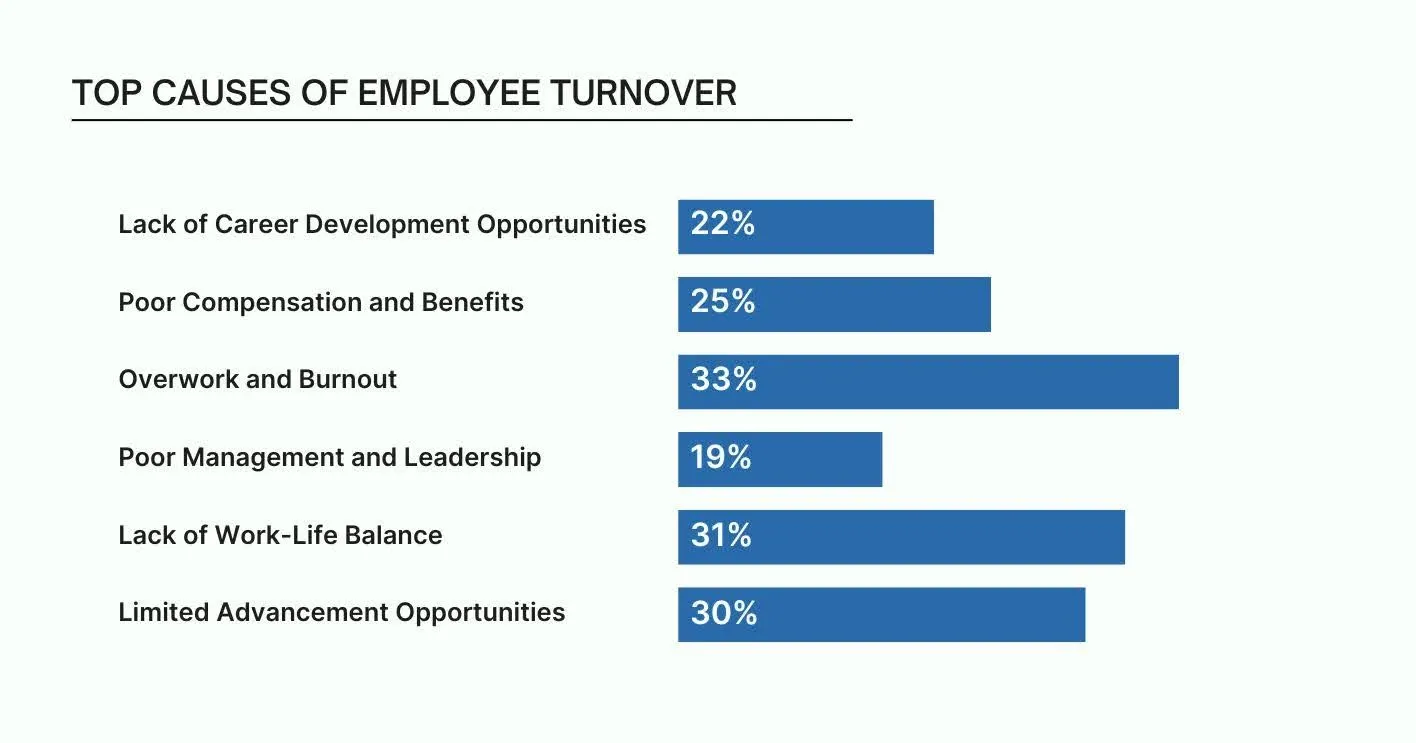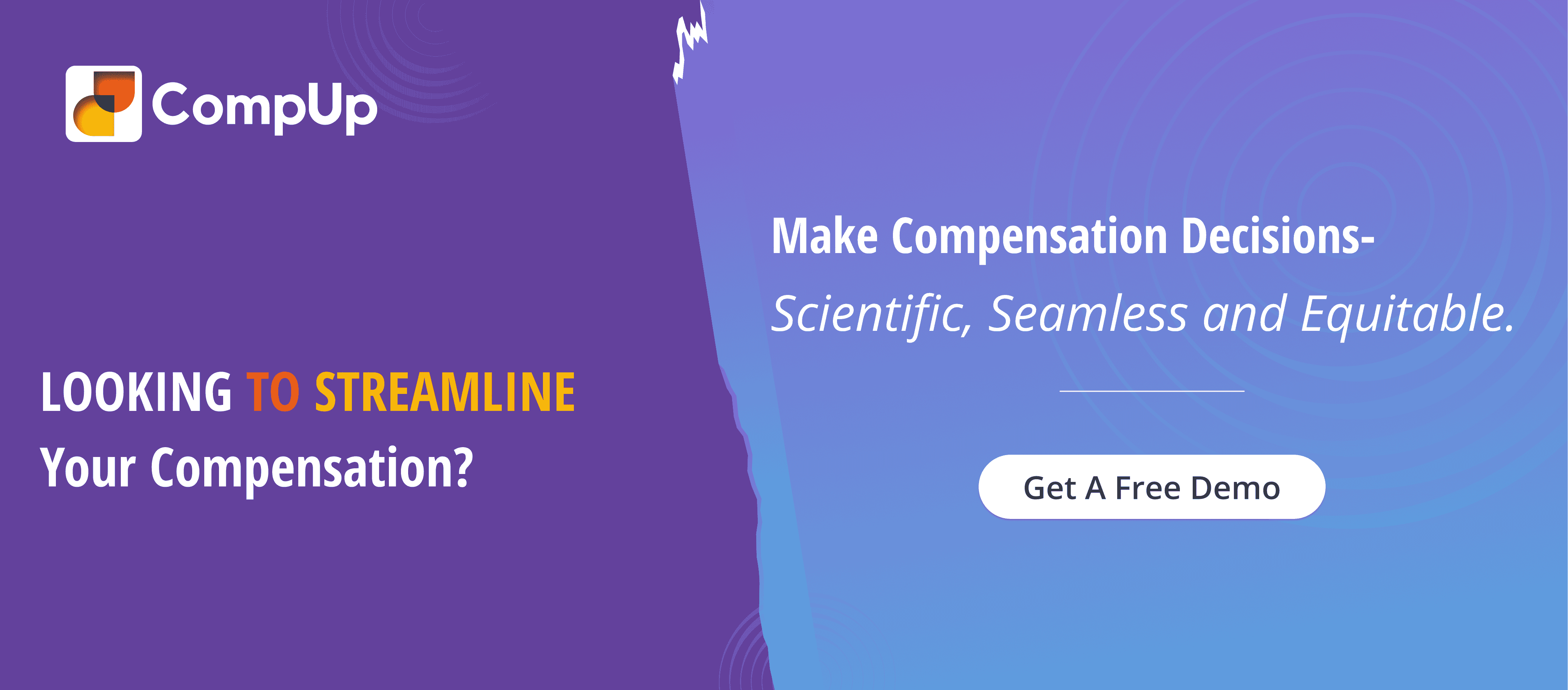
Employee turnover is one of the most costly challenges businesses face today. According to the Work Institute's 2020 Retention Report, voluntary turnover alone cost U.S. businesses over $630 billion in 2019, marking a $30 billion increase from 2018. This substantial amount could be better allocated to areas like growth, innovation, and development.
The good news is that employee turnover is preventable. With the right strategies in place, organizations can significantly reduce employee attrition and retain their top talent.
In this blog, we will explore proven, actionable ways to reduce turnover, enhance employee satisfaction, and create a work environment where employees are eager to stay and grow with your company.
Employee turnover refers to the rate at which employees leave an organization and are replaced by new hires. It can be voluntary, where employees choose to leave for various reasons, or involuntary, when the organization terminates their employment. High turnover rates often signal underlying issues within the organization, such as poor management, inadequate compensation, or a lack of growth opportunities.
Understanding the causes of employee turnover is crucial for businesses, as excessive turnover can lead to increased costs related to recruitment, training, and lost productivity, while also negatively affecting morale and company culture. To effectively understand how to reduce employee turnover, companies must offer competitive compensation, career growth opportunities, and a supportive work environment.
Suggested Read: Top PayScale Alternatives and Competitors in 2025

To effectively reduce employee turnover, it’s necessary to understand why employees leave in the first place. Identifying the root causes behind turnover can help organizations address specific issues, rather than applying generic solutions.
Common reasons for turnover include:
By gathering feedback through exit interviews, surveys, and regular check-ins, organizations can identify these pain points and develop tailored strategies to address them. Understanding the unique factors contributing to turnover within your organization is the first step towards creating a more engaging and supportive work environment.

From the Community: Read these helpful tips from the Glassdoor community on reducing employee turnover.
Reducing employee turnover is crucial for the long-term success of an organization. High turnover not only comes with financial costs but also impacts team dynamics and overall productivity. Here are the key reasons why lowering turnover rates is vital:
After understanding why reducing employee turnover is crucial, let's explore 9 effective strategies that can help organizations retain their top talent.
Suggested Read: The Importance of Internal Pay Equity
Reducing employee turnover requires a strategic approach that addresses the root causes of why employees leave. By implementing targeted actions, organizations can improve retention, boost employee satisfaction, and create a positive work environment.
Here are nine proven ways to reduce employee turnover:
Hiring the right employees goes beyond qualifications. It’s about finding individuals who align with your company culture and long-term goals. A well-matched employee is more likely to stay engaged, contribute meaningfully, and help reduce turnover rates.
Pro Tip: Use behavioral interview techniques to assess long-term compatibility and predict employee success.
Providing attractive compensation and benefits is essential for retaining top talent. Employees who feel valued financially and supported in their well-being are more likely to stay committed to the organization.
Pro Tip: Conduct regular market salary reviews to stay competitive and adjust compensation accordingly.
Employees are more likely to stay when they see clear career development paths within the company. Investing in upskilling instills loyalty and enhances productivity. Employees feel valued and motivated when they have clear opportunities for career advancement and professional growth.
Pro Tip: Implement a learning management system (LMS) to track employee progress, deliver personalized training modules, and analyze skill development trends.
A strong manager-employee relationship promotes trust and engagement, reducing turnover rates. Open communication and consistent support enhance employee satisfaction. When employees feel heard and valued by their managers, they are more motivated to contribute and remain committed to the organization.
Pro Tip: Utilize AI-driven sentiment analysis on employee feedback to identify areas for improvement and enhance workplace communication effectiveness.
A healthy work-life balance enhances employee well-being and prevents burnout, leading to higher retention rates. Companies that support flexible work arrangements create a more engaged workforce.
Pro Tip: Utilize predictive analytics to assess work patterns and optimize scheduling, ensuring employees maintain a healthy balance between professional responsibilities and personal well-being.
By implementing CompUp’s compensation management features, organizations can use predictive analytics to create more effective scheduling strategies. It analyzes workload trends to optimize scheduling, prevent burnout, and support flexible work arrangements. With data-driven insights, companies can create policies that respect personal time while enhancing employee well-being and retention.
Recognizing employee efforts strengthens motivation and creates a sense of belonging, encouraging them to stay with the organization. Consistent and meaningful appreciation enhances job satisfaction, boosts morale, and reinforces a positive workplace culture.
Pro Tip: Regular appreciation through simple gestures can significantly boost morale and engagement.
Employees feel valued when their concerns are acknowledged and addressed efficiently. A responsive workplace minimizes dissatisfaction and strengthens retention.
Pro Tip: Implement AI-driven employee sentiment analysis to detect emerging workplace concerns in real time. Use predictive issue-tracking models to identify patterns in employee feedback and proactively address potential problems before they escalate.
A highly engaged workforce leads to increased productivity and lower turnover rates. Organizations must foster collaboration and meaningful employee engagement through transparent communication, inclusive decision-making processes, and opportunities for skill development.
Pro Tip: Regular engagement initiatives create a work environment where employees feel empowered and motivated.
Tracking employee turnover trends helps companies pinpoint retention challenges and implement effective solutions. Organizations can uncover patterns and improve workplace policies by examining exit interview data, performance metrics, and engagement surveys.
Pro Tip: Regularly reviewing turnover data helps organizations make informed decisions to enhance employee retention.
These methods help address the evolving needs of employees, increase job satisfaction, and minimize turnover in a sustainable manner. While the strategies outlined above are essential for reducing turnover, CompUp takes it a step further by offering innovative solutions.

CompUp provides a range of features specifically designed to align compensation with performance, enhance transparency, and develop employee engagement. These features help create a supportive, fair, and motivating work environment, which plays a key role in reducing employee turnover.
Here’s how CompUp can help your organization reduce turnover:
CompUp provides organizations with real-time insights into compensation trends, helping HR teams make informed decisions about pay raises, bonuses, and adjustments. By ensuring that compensation is competitive and aligned with performance, employees feel valued and are less likely to seek opportunities elsewhere.
With CompUp, organizations can create tailored compensation plans through the Compensation Management module, providing flexibility for different employee groups, roles, and levels. This flexibility ensures that compensation strategies meet individual needs and market expectations, boosting employee satisfaction and loyalty.
CompUp’s Pay Transparency feature helps organizations clearly communicate compensation details, ensuring employees understand how their pay is structured. This transparency builds trust and reduces misunderstandings, mitigating dissatisfaction and turnover.
Aligning compensation with performance is a core feature of CompUp. The budget simulation and manager execution features ensure that rewards are directly tied to employee achievements, fostering motivation and engagement, as employees know their hard work will be recognized and rewarded.
CompUp offers seamless integrations with existing HR management systems, consolidating compensation data into a unified platform. This integration ensures data consistency, reduces administrative errors, and ensures that employees’ compensation remains up to date, minimizing dissatisfaction.
CompUp includes built-in tools to collect feedback from employees regarding their compensation, benefits, and overall job satisfaction. These insights help organizations identify potential areas for improvement and take action to retain top talent.
CompUp offers benchmarking tools that allow organizations to compare their compensation packages against industry standards. This ensures that your company stays competitive in attracting and retaining employees, reducing the risk of losing talent to competitors offering better pay or benefits.
Incorporating CompUp's comprehensive features into your employee retention strategy helps create a culture of fairness, transparency, and recognition. This, in turn, leads to reduced turnover and enhances employee loyalty and satisfaction.
Employee turnover is a significant challenge that can be costly and disruptive to any organization. However, by implementing effective strategies, businesses can reduce turnover and increase employee satisfaction.
CompUp can further strengthen these efforts by ensuring fair compensation practices, increasing transparency, and aligning rewards with performance.
Many forward-thinking organizations are already using CompUp to improve compensation strategies and reduce turnover. Don’t get left behind. Schedule a demo today to join the growing number of companies prioritizing employee satisfaction and retention.
1. How can employee turnover be reduced?
Employee turnover can be reduced by offering competitive compensation, providing growth opportunities, fostering a positive company culture, improving management practices, and offering work-life balance. CompUp's Compensation Management feature helps align compensation with performance, ensuring employee satisfaction and retention.
2. Which of the following is a good strategy for reducing employee turnover?
Effective strategies include providing career development, offering competitive pay, improving workplace culture, and recognizing employee contributions. CompUp supports this by ensuring Pay Transparency and offering Performance-Based Rewards, which boost employee engagement and reduce turnover.
3. How can we solve the problem of high staff turnover?
To solve high turnover, address root causes like inadequate compensation, poor management, and lack of career growth. CompUp provides insights into compensation and performance data, ensuring employees feel valued and fairly rewarded, which lowers turnover rates.
4. How do you keep staff turnover low?
Keeping staff turnover low involves offering competitive pay, professional development, positive work culture, and regular feedback. CompUp helps by providing Real-Time Compensation Analytics, promoting Pay Equity, and improving employee satisfaction, which directly impacts retention.

Co-founder & CEO, CompUp
Anurag Dixit, founder of CompUp, is a seasoned expert in all things compensation and total rewards. With a deep understanding of the current compensation trends, his vision is to help companies create fair, transparent, and effective compensation strategies.
Revolutionizing Pay Strategies: Don't Miss Our Latest Blogs on Compensation Benchmarking